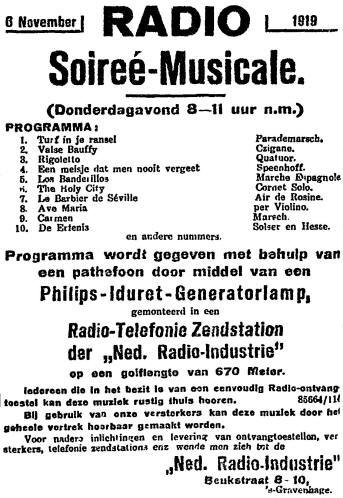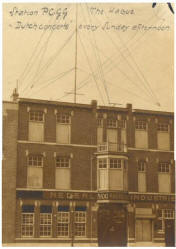|
Philips started its activities on May 15th, 1891
when Frederik and his son Gerard Philips founded a factory for light
bulbs in the city of Eindhoven. In 1895 Gerard's brother Anton joined
the factory management.
Philips began by making carbon-filament lamps and,
by the turn of the century, was one of the largest producers in Europe.
As developments in new lighting technologies fuelled a steady program of
expansion, in 1914 it established a research laboratory to study
physical and chemical phenomena and stimulate product innovation.
 |
Since the beginning, Philips has placed R&D and
innovation at the core of its activities, generating many breakthrough
inventions a few decades later, such as the Compact Cassette and the CD.
In 1918, Philips introduced a
medical X-ray tube. This marked the beginning of the diversification of
the company’s product range and the moment when it began to protect its
innovations with patents in areas stretching from X-ray radiation to
radio reception.
During the same period,
ir. Hanso Henricus à Steringa Idzerda, a Dutch engineer, radio pioneer and
owner of a small radio factory "Nederlandsche Radio-Industrie" (Dutch
Radio Industry, NRI) persuaded Philips to start making radio tubes,
resulting in the production of the first radio tubes and first Dutch radio broadcast on November 6th, 1919.
Holland was one of the very first countries in
Europe where regular radio broadcasts started. The first regular
broadcasts of speech and music in Europe came from the Belgian Royal
Palace in Laken, in 1914. Unfortunately these experiments stopped with
the outbreak of the First World War, when Belgium was invaded by the
German Army.
On November 5th, 1919, an advertisement appeared in
the newspaper "Nieuwe Rotterdamsche Courant", (left) announcing a
"Radio Soirée-Musicale" to be broadcast by radio the next day at 20.00
hours.
 The transmissions came from a house in
Beukstraat 8-10 in The Hague, where NRI, the radio factory, was
established. The transmissions came from a house in
Beukstraat 8-10 in The Hague, where NRI, the radio factory, was
established.
The first song to be broadcast was "Turf in je
ransel", a Dutch military parade march. |